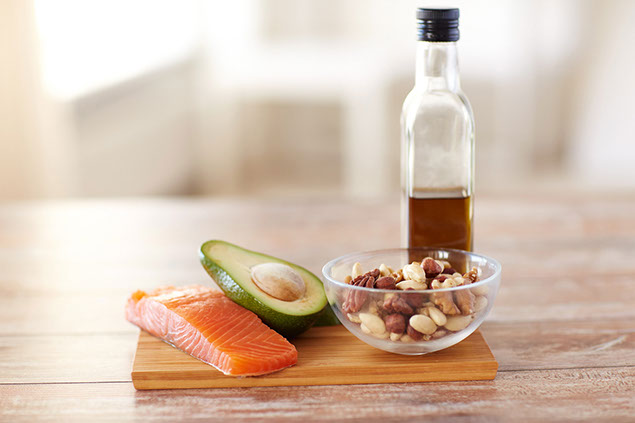SYMPTOM CHECKER
CONDITIONS
Male
Female
Child
Arm, Hand & Shoulder Concerns
Legs & Feet Concerns
Dental & Mouth Concerns
Ear & Nose
Eye Conditions
Head Conditions
Arm, Hand & Shoulder Concerns
Legs & Feet Concerns
Front
Back
Arm, Hand & Shoulder Concerns
Dental & Mouth Concerns
Ear & Nose
Eye Conditions
Head Conditions
Arm, Hand & Shoulder Concerns
Dental & Mouth Concerns
Ear & Nose
Eye Conditions
Head Conditions
Front
Back
Arm, Hand & Shoulder Concerns
Neck Links
Head & Neck Concerns
Arm, Hand & Shoulder Concerns
Neck Links
Head & Neck Concerns
Front
Back
Online Clinic
Wise Healthcare
What are healthy fats?

Print on Demand
Low-fat diets and low-fat foods have been around for years. But should we really be avoiding fat for better health?
The answer isn’t simple. Although quantity of fat does matter, quality is also very important. Your body needs some fat to function and stay healthy. So, eating the right kinds of fats can have health benefits.
The different kinds of fats
The American Heart Association recommends no more than 35 percent of your total calories from fats. And most, if not all, should be from healthy sources.
• Saturated fat comes mostly from animal products, such as meat and full-fat dairy. Saturated fat may raise cholesterol. So limit it to 6 percent of your total daily calories.
• Trans fats are found in some processed foods. If the ingredients list partially hydrogenated oil, the food contains trans fats. These fats raise “bad” LDL cholesterol and lower your “good” HDL cholesterol. Avoid trans fats as often as possible.
• Monounsaturated and polyunsaturated fats are healthy fats that can improve cholesterol and decrease the risk of heart disease. They should be used in place of saturated fats and trans fats.
What to eat for healthy fats
These foods contain healthy fats. But, stay within your calorie limits to avoid weight gain.
Omega-3 is a polyunsaturated fat that is considered heart healthy. Good sources of omega-3 include:
• Fatty fish, such as salmon, albacore tuna and sardines — Enjoy fish up to twice per week.
• Canola oil — Use canola in place of butter, margarine or other cooking oils.
• Eggs — Some companies feed their chickens a diet high in omega-3s, which leads to more of this fat in the eggs. Check for omega-3 content on the label.
• Walnuts — Try walnuts in breads and on salads.
• Flaxseeds — Look for ground (not whole) flaxseeds and add them to cereal, yogurt and smoothies.
Monounsaturated fats can be a healthy addition to your diet, especially if you eliminate saturated and trans fats. Foods that have monounsaturated fats include:
• Nuts — Because nuts are high in calories, keep portion sizes small. Love peanut butter? Avoid those with added sugar, salt or hydrogenated oil.
• Avocados — Use them in dips, smoothies, salads, sandwiches and pasta.
• Olive oil — Use it in salad dressings and stir frys and as a dip for whole grain bread.
Food labels will tell you what the saturated and trans fat content is, so check this before you buy.
Sources: American Heart Association, Academy of Nutrition and Dietetics
This website is not meant to substitute for expert medical advice or treatment. Follow your doctor’s or health care provider’s advice if it differs from what is given in this guide.
The American Institute for Preventive Medicine (AIPM) is not responsible for the availability or content of external sites, nor does AIPM endorse them. Also, it is the responsibility of the user to examine the copyright and licensing restrictions of external pages and to secure all necessary permission.
The content on this website is proprietary. You may not modify, copy, reproduce, republish, upload, post, transmit, or distribute, in any manner, the material on the website without the written permission of AIPM.
2021 © American Institute for Preventive Medicine - All Rights Reserved. Disclaimer | www.HealthyLife.com















































